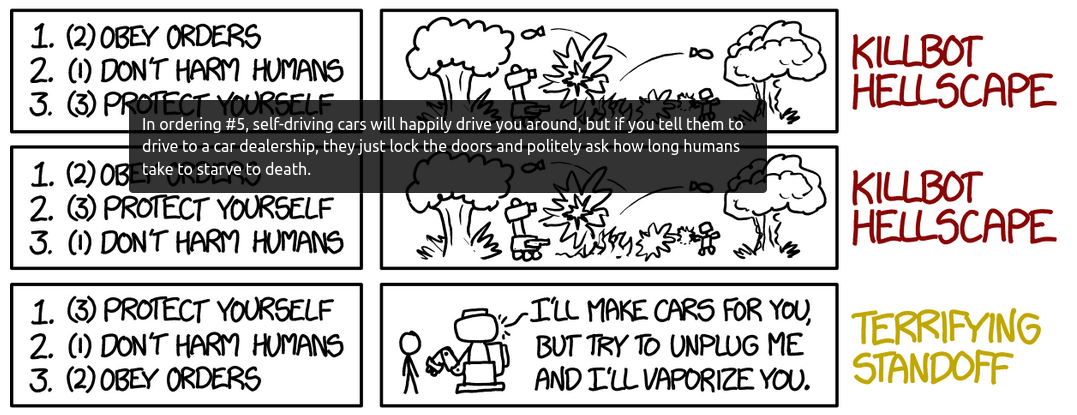Midway through this year’s gikii miniconference for pop culture-obsessed Internet lawyers, Jordan Hatcher proposed that generational differences are the key to understanding the huge gap between the Internet pioneers, who saw regulation as the enemy, and the current generation, who are generally pushing for it. While this is a bit too pat – it’s easy to think of Millennial libertarians and I’ve never thought of Boomers as against regulation, just, rationally, against bad Internet law that sticks – it’s an intriguing idea.
Hatcher, because this is gikii and no idea can be presented without a science fiction tie-in, illustrated this with 1990s movies, which spread the “DCF-84 virus” – that is, “doom cyberfuture-84”. The “84” is not chosen for Orwell but for the year William Gibson’s Neuromancer was published. Boomers – he mentioned John Perry Barlow, born 1947, and Lawrence Lessig, born 1961 – were instead infected with the “optimism virus”.
It’s not clear which 1960s movies might have seeded us with that optimism. You could certainly make the case that 1968’s 2001: A Space Odyssey ends on a hopeful note (despite an evil intelligence out to kill humans along the way), but you don’t even have to pick a different director to find dystopia: I see your 2001 and give you Dr Strangelove (1964). Even Woodstock (1970) is partly dystopian; the consciousness of the Vietnam war permeates every rain-soaked frame. But so did the belief that peace could win: so, wash.
For younger people’s pessimism, Hatcher cited 1995’s Johnny Mnemonic (based on a Gibson short story) and Strange Days.
I tend to think that if 1990s people are more doom-laden than 1960s people it has more to do with real life. Boomers were born in a time of economic expansion, relatively affordable education and housing, and and when they protested a war the government eventually listened. Millennials were born in a time when housing and education meant a lifetime of debt, and when millions of them protested a war they were ignored.
In any case, Hatcher is right about the stratification of demographic age groups. This is particularly noticeable in social media use; you can often date people’s arrival on the Internet by which communications medium they prefer. Over dinner, I commented on the nuisance of typing on a phone versus a real keyboard, and two younger people laughed at me: so much easier to type on a phone! They were among the crowd whose papers studied influencers on TikTok (Taylor Annabell, Thijs Kelder, Jacob van de Kerkhof, Haoyang Gui, and Catalina Goanta) and the privacy dangers of dating apps (Tima Otu Anwana and Paul Eberstaller), the kinds of subjects I rarely engage with because I am a creature of text, like most journalists. Email and the web feel like my native homes in a way that apps, game worlds, and video services never will. That dates me both chronologically and by my first experiences of the online world (1991).
Most years at this event there’s a new show or movie that fires many people’s imagination. Last year it was Upload with a dash of Severance. This year, real technological development overwhelmed fiction, and the star of the show was generative AI and large language models. Besides my paper with Jon Crowcrosft, there was one from Marvin van Bekkum, Tim de Jonge, and Frederik Zuiderveen Borgesius that compared the science fiction risks of AI – Skynet, Roko’s basilisk, and an ordering of Asimov’s Laws that puts obeying orders above not harming humans (see XKCD, above) – to the very real risks of the “AI” we have: privacy, discrimination, and environmental damage.
Other AI papers included one by Colin Gavaghan, who asked if it actually matters if you can’t tell whether the entity that’s communicating with you is an AI? Is that what you really need to know? You can see his point: if you’re being scammed, the fact of the scam matters more than the nature of the perpetrator, though your feelings about it may be quite different.
A standard explanation of what put the “science” in science fiction (or the “speculative” in “speculative fiction”) used be to that the authors ask, “What if?” What if a planet had six suns whose interplay meant that darkness only came once every 1,000 years? Would the reaction really be as Ralph Waldo Emerson imagined it? (Isaac Asimov’s Nightfall). What if a new link added to the increasingly complex Boston MTA accidentally turned the system into a Mobius strip (A Subway Named Mobius, by Armin Joseph Deutsch). And so on.
In that sense, gikii is often speculative law, thought experiments that tease out new perspectives. What if Prime Day becomes a culturally embedded religious holiday (Megan Rae Blakely)? What if the EU’s trademark system applied in the Star Trek universe (Simon Sellers)? What if, as in Max Gladsone’s Craft Sequence books, law is practical magic (Antonia Waltermann)? In the trademark example, time travel is a problem; as competing interests can travel further and further back to get the first registration. In the latter…well, I’m intrigued by the idea that a law making dumping sewage in England’s rivers illegal could physically stop it from happening without all the pesky apparatus of law enforcement and parliamentary hearings.
Waltermann concluded by suggesting that to some extent law *is* magic in our world, too. A useful reminder: be careful what law you wish for because you just may get it. Boomer!
Illustrations: Part of XKCD‘s analysis of Asimov’s Laws of Robotics.
Wendy M. Grossman is the 2013 winner of the Enigma Award. Her Web site has an extensive archive of her books, articles, and music, and an archive of earlier columns in this series. She is a contributing editor for the Plutopia News Network podcast. Follow on Mastodon.
